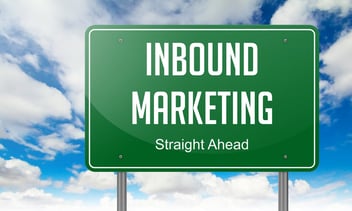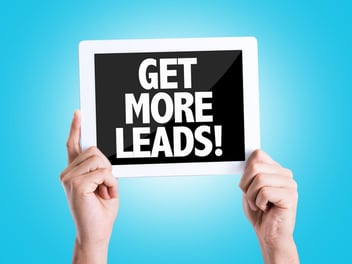Sales is perhaps one of the oldest known professions in the history of the world. Going as far back as the Stone Age or the Caveman Era, humans lived in small huts or in caves, as the era’s name suggests. They were hunters and gatherers. It would be easy to imagine that maybe with the many physical difficulties imposed by the lack of civilization and the absence of technology back then, it was every man for himself.
Each would hunt for himself and his family, then consume their game among themselves as well. It was the only way to survive. But somewhere along the way, as men of earlier times thought of ways to better their chances at survival, an idea came along and caught on: those who excel at hunting, would sell their game. That way, less and less people would die of hunger.
From there, out came the idea of barter– the exchanging of goods for another. Then they finally came up with the metal as a mode of exchange. From that point on, the human race has kept developing new industries that paved the way for a more evolved trade.
There was the Industrial Revolution, the era after the second world war where societies were being rebuilt and salesmen in flashy coats and ties came knocking on people’s doors. There was the invention of the internet which provided buyers more and more power that, back in the days when sales people had exclusive access to product information, they didn’t have.
The manner of selling and the strategies employed by sales people have evolved, just as humans and technology have.
We’ve come a long way from our earliest forms of selling, 30-50 years ago, barter trade and door-to-door selling were the game. Sales people had to knock on doors seeking prospective buyers. Today, prospects seek whoever can sell to them what they need.
Welcome to the age of Inbound Sales.
Keep reading and find out what that’s all about!
What is Inbound Sales?
Inbound Sales in the simplest of terms, is a way of selling that allows buyers to seek you and come to you instead of you seeking them out. As heavily enshrined by the Inbound Strategy that backs it up, Inbound Sales means that you don’t do hard-sell, you don’t give big sales speeches, and you never waste time, energy, and resources on buyers who may not even buy what you sell in the first place.
So after presenting the things that Inbound Sales is not, it is about time that you find out, what is Inbound Sales.
HubSpot's CEO Brian Halligan coined the term “Inbound Marketing” which is the main concept that brings all the other inbound concepts together. So getting HubSpot's take on what is Inbound Sales might just be proper.
Inbound Sales, according to HubSpot, is “a personalized, helpful, modern sales methodology”. It is one that, as HubSpot further explains, allows inbound salespeople to “focus on their prospect’s pain points, act as trusted consultant, and adapt their sales process to the buyer’s journey”.
Those who have a good grasp of what Inbound Marketing is won't have any trouble understanding all this. Inbound is all about letting prospects come to you.
You do this by providing useful information that can help them identify what they need and subtly and very carefully, guide them into realizing and deciding that it is your product that they need.
Inbound Sales is guided by all that, too!
Very simple, right? At this point, you’re probably starting to ask– how to build an Inbound Sales Process?
Stellar question. Now let’s try to answer that, shall we?
How to Build an Inbound Sales Process?
In this section, we will give you insights on how to build an inbound sales process.
Much like inbound marketing, the inbound sales process is divided into different stages. These are the following: awareness, consideration, and decision stages.
Inbound is big on the awareness portion of the entire sales process.
To be successful in the awareness stage, you must keep in mind that the majority of your prospects may have already scoured the internet for every bit of vital information that can help them in choosing what product to get. As an inbound sales person, you can use video marketing, social media, and blogging to attract potential buyers.
You can also prioritize active buyers as they have a higher tendency to purchase your product. You can do this by checking which of your prospects have provided their contact information, subscribed to emails, or viewed product pages.
Next is the Consideration Stage. This is where your buyer personas come into play. Buyer personas will be key to you succeeding in this stage.
Being in the consideration stage means that they’re halfway through their journey and are very close to making a purchase. Utilize your buyer personas and tailor-fit your approach to your buyer’s persona. Not only will you know for sure what makes them tick, and what their motivations are in life, you will also evade the possibility of earning their ire when you approach them in a manner that irks them the most.
Find out what their pain-points are and show them that your product is the solution. The information your buyer’s persona can provide you will go a long way– from the challenges they have that your product can help with, the budget they are willing to work on, down to when they are most likely to buy. These are all helpful tools in landing a sale while still guiding a prospect through the consideration stage.
Last, is the Decision Stage. Here, you drop the generic and impersonal script that traditional salespeople are known for. There is simply no room for hard-sell in inbound. In the decision stage, you find a way to make the connection between the struggles of your prospect’s day to day life and your product.
This is where you show them just how much they need your product. You show, not tell. And not just through this one final stage, but from how your initial efforts (from marketing and everything else) have educated them, guided them, and finally convinced them they need what you sell.
The decision stage is where you reiterate their need, and how well you understand this need. From here, your prospect already knows what to do, and it’s only a matter of time before they make that coveted purchase you have, all this time, been subtly and gently leading them to.
Learn more about the Inbound concepts and how they can help you generate better leads. Checkout our eBook on the said topic and if it resonates to your marketing needs, download it right away!

 What is Inbound Sales?" loading="lazy">
What is Inbound Sales?" loading="lazy">


